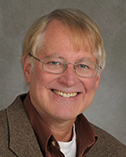
Ken A. Dill
Stony Brook University, The State University of New York
|
Primary Section: 29, Biophysics and Computational Biology Secondary Section: 14, Chemistry Membership Type:
Member
(elected 2008)
|
Research Interests
I developed the 'HP lattice model' of proteins. With it, we have explored the hypothesis that the protein folding code is mainly a binary solvation code. I have been interested in the puzzle of how small proteins fold so quickly. Using simplified models, I found that fast folding can be explained by a mechanism of zipping and assembly; i.e., local structures form first, and nonlocal structures form later. My former students and I and others are developing foldamers, such as peptoids, as antimicrobials and for other applications. Seeking a simple model that could explain many of the properties of water, we have developed the Mercedez-Benz model, and studied how water interacts with hydrophobic solutes and ions. And, in recent work with Rob Phillips, I am exploring a principle called `Maximum Caliber', for explaining the dynamical noise properties of very small systems in biology and nanotechnology.

